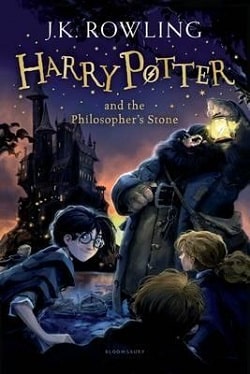A mob formed and attacked him. Zheng struggled to stand on his grassy stumps and then to run. He fell, crushing a house under his weight. He stood again and lumbered on, laboring up a hill with thundering steps that punched holes in the street.
The mob chased him, joined by soldiers who fired arrows at his back. From his wounds gushed liquid gold, which only encouraged more people to join the attack. All the while, Zheng was steadily growing, and soon he was twice the width of his street and three times the height of his house. His form was fast becoming inhuman, his arms and legs disappearing within the giant, earthen ball that was his midsection.
He made it to the top of the street on tiny, waddling stumps. A moment later they were swallowed up, and with nothing left to steady him, his round form began to roll down the other side—slowly at first, then faster and faster. He became unstoppable, flattening houses and wagons and people as he went, growing larger all the while.
He careened into the harbor, hurtled down a splintering dock, and then splashed into the sea, making a wave so big that all the boats around him swamped. Submerged and drifting, he began to grow faster than ever, his grass and earth and sand and seaweed spreading over the water to form a small island. The transformation was so all-consuming that he did not notice the approach of several of the emperor’s warships. He felt it, though, when they began to fire their cannons into him.
The pain was incredible. His blood made the sea shine golden in the sun. He thought his life was about to end—until he heard a familiar voice.
It was his father, calling his name.
Cocobolo plowed into their midst with a great rumble. The wake he made knocked over the emperor’s warships like they were toys. Zheng felt something link with him beneath the surface of the water, and then his father was pulling him out to sea. Once they were away from danger and all was quiet, his father used bent coconut palms to catapult earth into the holes that had been shot through Zheng.
“Thank you,” Zheng said, his voice a loud rumble that came from he knew not where. “I don’t deserve your kindness.”
“Of course you do,” replied his father.
“You were keeping watch,” said Zheng.
“Yes,” said his father.
“For all these years?”
“Yes,” he said again. “I had a feeling you’d need my help one day.”
“But I was so cruel to you.”
His father was quiet for a moment. Then he said: “You’re my son.”
Zheng’s bleeding had stopped, but now he felt a worse pain: incredible shame. Zheng was well acquainted with shame, but this type was new. He was ashamed by the kindness he’d been shown. He was ashamed at how he’d treated his poor father. But he was ashamed, most of all, of how ashamed he’d been of himself, and of what he’d let that turn him into.
“I’m sorry, Father.” Zheng wept. “I’m so very sorry.”
Even as he cried, Zheng could feel himself growing, his sand and grass and earth creeping outward, his seaweed thickening into a forest of submarine kelp. The coral reef that encircled his father linked itself to the one beginning to form around Zheng, and with a gentle tug, the elder Cocobolo led the younger still farther out to sea.
“There’s a wonderful spot near Madagascar where we can relax in safety,” said the elder. “I believe you need a nice, long nap.”
Zheng let himself be pulled along and, as the days passed, he began to feel something wonderful and entirely new.
He felt like himself.
The Pigeons of Saint Paul’s
Editor’s note:
The story of the pigeons and their cathedral is one of the oldest in peculiar folklore, and it has taken drastically different forms over the centuries. While the most common versions cast the pigeons as builders, I find their role as destroyers in this iteration much more interesting.
—MN
Once upon a peculiar time, long before there were towers or steeples or tall buildings of any sort in the city of London, all the pigeons lived high up in the trees where they could keep away from the bustle and fracas of human society. They didn’t care for the way humans smelled or the strange noises they made with their mouths or the mess they made of things generally, but they did appreciate the perfectly edible things they dropped on the street and threw into garbage heaps. Thus, the pigeons liked to stay near humans, but not too near. Twenty to forty feet above their heads was just about perfect.
But then London started to grow—not just outward, but upward—and the humans began building lookout towers and churches with steeples and other things that intruded upon what the pigeons considered their private domain. So the pigeons called a meeting, and several thousand of them gathered on an empty island in the middle of the river Thames15 to decide what to do about the humans and their increasingly tall buildings. Pigeons being democratic, speeches were made and the question was put to a vote. A small contingent voted to put up with the humans and share the air. A smaller faction advocated leaving London altogether and finding somewhere less crowded to live. But the vast majority voted to declare war.
Of course, the pigeons knew they couldn’t win a war against humans—nor did they want to. (Who would drop scraps for them to eat if the humans were dead?) But pigeons are experts in the art of sabotage, and with a clever combination of disruption and vandalism, they began a centuries-long fight to keep the humans at ground level, where they belonged. In the beginning it was easy because the humans built everything from wood and straw. Just a few burning embers deposited in a thatch roof could reduce an annoyingly tall building to ashes. But the humans kept rebuilding—they were bafflingly un-discourageable—and the pigeons continued to torch any structure taller than two stories just as fast as the humans could erect them.
Eventually the humans grew wiser and began building their towers and steeples from stone, which made them much harder to burn down—so the pigeons tried to disrupt their construction instead. They pecked at workers’ heads, knocked down scaffolding, and pooped on architectural plans. This slowed the humans’ progress a bit, but didn’t stop it, and after some years a great stone cathedral rose higher than any of the trees in London. The pigeons considered it an eyesore and an affront to their dominance of the sky. It made them terribly grumpy.
Happily, Vikings soon raided the city and tore it down—along with most of London. The pigeons loved the Vikings, who didn’t care for tall buildings and left tasty garbage all over the place. But after some years the Vikings went away and the steeple-builders got to work again. They chose a high hill overlooking the river and constructed a massive cathedral there, one that dwarfed everything that had come before it. They named it Saint Paul’s. Time and time again the pigeons tried to burn it down, but the humans had dedicated a small army of firefighters to the protection of the cathedral, and the pigeons’ every effort was thwarted.
Frustrated and angry, the pigeons began setting fires in adjacent neighborhoods, at places upwind from the cathedral on gusty nights, in hopes the flames would spread. Early on the morning of September 2, 1666, their efforts were disastrously successful. A pigeon named Nesmith set fire to a bakery a half mile from Saint Paul’s. As the bakery was consumed, a ferocious wind pushed the flames straight uphill toward the cathedral. It burned completely—naves, belfries, and all—and after four days of destruction, so had eighty-seven other churches and more than ten thousand homes. The city was a smoking ruin.16
The pigeons hadn’t envisioned such devastation, and they felt genuinely bad about it. Emotionally, it was a different thing altogether from the Viking raids. Though the damage was comparable, this was their fault entirely. They called a meeting and debated whether to leave London altogether. Perhaps, some argued, they did not deserve to live there anymore. The vote was split, and they decided to return the following day and debate the matter again. That night the revenge attacks began. There was a contingent of humans w
ho seemed to understand that pigeons were to blame for the fire, and had decided to drive them out. They soaked bread crumbs in arsenic and tried to poison the pigeons. They cut down the pigeons’ favorite roosting trees and destroyed their nests. They chased pigeons with brooms and bats and shot at them with muskets. After that, not a single pigeon was willing to leave the city; they were too proud. Instead they voted to fight back again.
The pigeons pecked and pooped and spread disease and did everything they could to make the humans miserable. In turn, the humans ratcheted up their violence against the birds. Truthfully, the pigeons couldn’t do much more than annoy the humans, but when the humans started to rebuild the cathedral—the very symbol of their arrogance—the pigeons waged all-out war. Thousands of them descended on the construction site, risking life and wing to chase away the workers. Day after day, pitched battles were waged between the humans and the birds, and no matter how many pigeons the humans killed, more always seemed to come. They reached a stalemate. Construction ground to a halt; it seemed there would never be another cathedral on the site of Saint Paul’s, and that the pigeons of London would be harassed and killed forever.
A year passed. The pigeons continued to fight, and their numbers to dwindle, and though the humans were steadily rebuilding the rest of London, they seemed to have abandoned their plans for the cathedral. Yet the violence continued, because hatred between humans and pigeons had become ingrained.
One day, the pigeons were meeting on their island when a rowboat arrived carrying a single human. The pigeons became alarmed and were about to swarm him when he raised his arms and shouted, “I come in peace!” They soon learned that he wasn’t like most other humans—haltingly, brokenly, he could speak the pigeons’ native language of chirps and coos. He knew a great deal about birds, he told them, and peculiar birds at that, because his mother had been one. Moreover, he sympathized with their cause and wanted to broker a peace.
The pigeons were astounded. They took a vote and decided not to peck the man’s eyes out—at least not right away. They questioned him. The man’s name was Wren, and he was an architect. His fellow humans had tasked him with attempting to rebuild the cathedral on the hill yet again.
“You’re wasting your time,” said Nesmith, the fire starter and the pigeons’ leader. “Too many of us have died to prevent it.”















